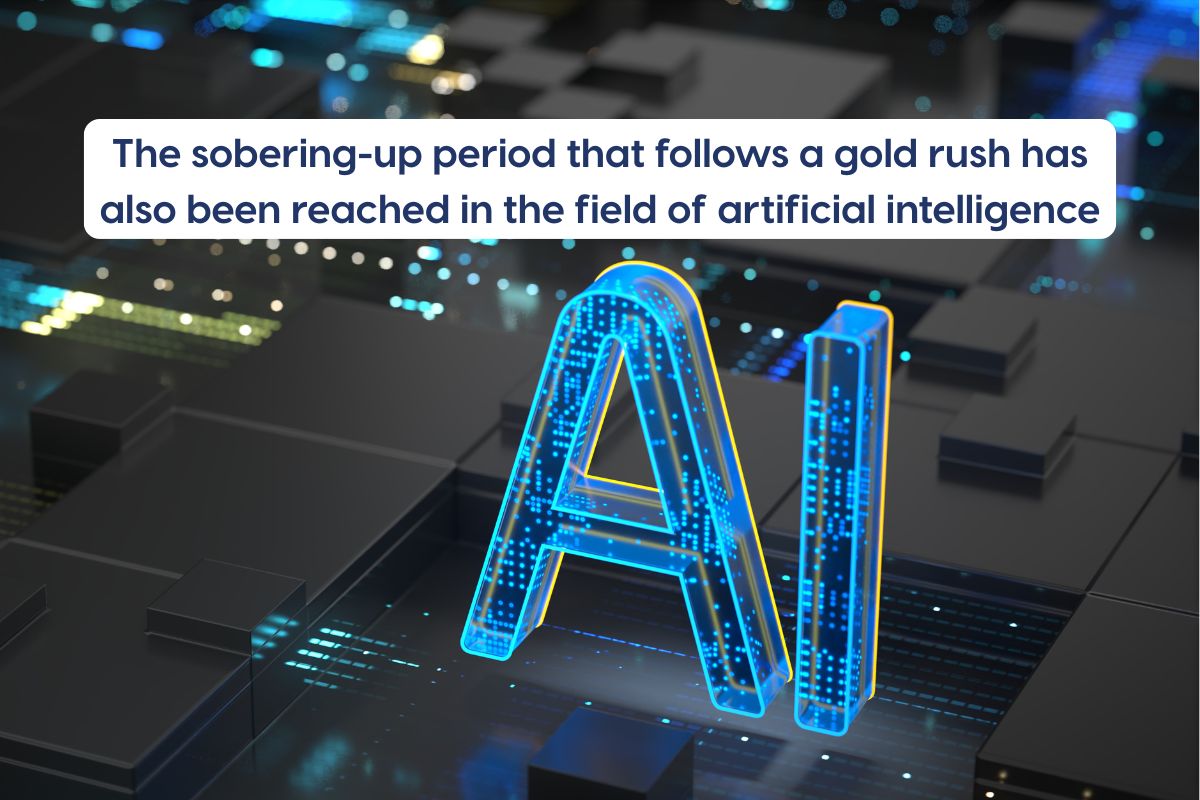A common feature of successive technological industrial revolutions is that they resemble gold rushes. They attract capital, which leads to inflated investor and stock market bubbles, and many see them as an opportunity to get rich; others don’t want to be left out. It seems that artificial intelligence is no exception to this rule.
According to the Financial Times’ report on the stalling of AI’s seemingly unstoppable spread by the summer of 2025, the huge amount of capital flowing into the development and application of artificial intelligence is the fastest and largest investment that people have ever made in a commonly used technology.
According to estimates by Morgan Stanley cited by the business newspaper, American tech giants Amazon, Google, Meta and Microsoft alone will invest a combined $750 billion in AI models this year and next. This figure is more than three and a half times Hungary’s annual GDP. By 2029, it is expected that companies worldwide will have spent $3 trillion on artificial intelligence.
However, investors are increasingly questioning what this enormous expenditure will contribute to their bottom line. Economic history provides cautionary examples that justify their nervousness. A Financial Times article references Carlota Perez’s book ‘Technological Revolutions and Financial Capital’: The Dynamics of Bubbles and Golden Ages, as an example.
Bubbles have the unfortunate tendency to burst sooner or later
In his work, Perez distinguishes five major technological revolutions. These are: the Industrial Revolution at the end of the 18^(th) century; the advent of steam power and the use of coal; the emergence of railways in the 1830s; the development of steel production and heavy machinery manufacturing in the 1870s; the birth of mass production in the early 20^(th) century; and the Information Technology Revolution from the 1970s onwards. He considers the emergence of artificial intelligence to be an extension of the fifth revolution.
Furthermore, his book argues that these enormous transformations follow a predictable cycle. The first phase is a period of system development accompanied by significant creative destruction, social tensions, the disappearance of entire professions and changes to the territorial structure of the economy. This is followed by a phase of excessive investment, financial gold rushes and stock market bubbles.
Investment bubbles are useful because they finance the creation of the infrastructure necessary for the spread of new technologies. Consider, for example, the construction of railways or the electricity grid. This infrastructure is necessary for innovation to bring economic benefits. According to Pérez, in the field of AI, we are currently in the bubble phase — the period of infrastructure construction.
It’s not just theory — the numbers also back up the idea that venturing into the unknown is risky.
A recently published study by researchers at the Massachusetts Institute of Technology (MIT) found that 95 per cent of the companies surveyed had not yet seen any benefits from using artificial intelligence, supporting this theoretical assumption. In response to the AI market bubble, Sam Altman, the CEO of OpenAI — the most famous AI company — said that ‘some investors are likely to lose a lot of money’.
According to Perez, there will be many bankruptcies before the ‘golden age of artificial intelligence’ arrives. One of the key messages of his book is that every technological golden age is built partly on major failures. At the same time, investors also need to pay attention to how the current technological revolution differs from previous ones.
This is the first change happening in both hardware and software. It could change investment and return, as software sales and licensing can be scaled up easily. A software company can become a global market player overnight.
Rapid success comes with risk
OpenAI’s ChatGPT chatbot is used by 700 million people weekly, less than three years after release. However, success comes with risk because software is easy to replace. We saw this when China’s DeepSeek released software similar to OpenAI’s AI model, but much cheaper. This caused technology stock markets to tremble.
The most obvious difference between previous industrial revolutions and the current technological explosion is that, unlike previous revolutions, artificial intelligence is not valuable in itself, but rather in its applications in other industries. For example, AI can advance biotechnology, robot development and materials science.
So, how can companies working with AI benefit from this? How can they profit from their technology being used by others to develop new drugs, create new testing methods or generate revenue through robot taxi companies based on autonomous driving? These are open questions that even economic historians cannot answer due to a lack of precedent.
LogMASter’s competitive service from the Far East
Our rail freight services from China with short transit times!
Need just a few pallets of goods from your Chinese supplier urgently?
We will import your shipment from China and deliver it to your door with customs clearance in 18 days!
Contact our colleagues at sales@logmaster.eu!
